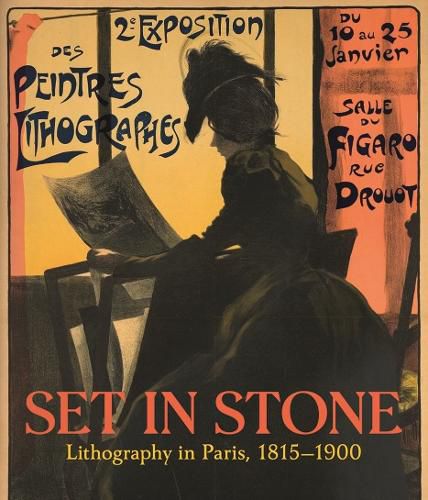Readings Newsletter
Become a Readings Member to make your shopping experience even easier.
Sign in or sign up for free!
You’re not far away from qualifying for FREE standard shipping within Australia
You’ve qualified for FREE standard shipping within Australia
The cart is loading…






In the early 19th century, artists and printers embraced the new medium of lithography, an innovative method to mass - produce and distribute images. Known for its collection of French prints and posters, the Zimmerli Art Museum at Rutgers University has rich holdings of lithographs made over the course of the 1800s, including examples from lithography’s early years in Paris to iconic color posters from the 1890s.
Invented around 1796, lithography introduced a new proc ess and new opportunities for the creation and circulation of printed images. Artists, printers, and publishers embraced the new medium for its relative ease and economic advantages as compared with the established printmaking media of woodcut, engraving, and etching. Taking root in Paris around 1815 after the fall of Napoleon’s empire, the art and industry of lithography grew in tandem with the city as it became Europe’s artistic and urban capital over the course of the nineteenth century. Lithographs play ed a distinct role in both documenting and advancing (and often satirizing) the various and competing art movements of the period as publishers responded to the unprecedented demand for printed images of all types.
$9.00 standard shipping within Australia
FREE standard shipping within Australia for orders over $100.00
Express & International shipping calculated at checkout
In the early 19th century, artists and printers embraced the new medium of lithography, an innovative method to mass - produce and distribute images. Known for its collection of French prints and posters, the Zimmerli Art Museum at Rutgers University has rich holdings of lithographs made over the course of the 1800s, including examples from lithography’s early years in Paris to iconic color posters from the 1890s.
Invented around 1796, lithography introduced a new proc ess and new opportunities for the creation and circulation of printed images. Artists, printers, and publishers embraced the new medium for its relative ease and economic advantages as compared with the established printmaking media of woodcut, engraving, and etching. Taking root in Paris around 1815 after the fall of Napoleon’s empire, the art and industry of lithography grew in tandem with the city as it became Europe’s artistic and urban capital over the course of the nineteenth century. Lithographs play ed a distinct role in both documenting and advancing (and often satirizing) the various and competing art movements of the period as publishers responded to the unprecedented demand for printed images of all types.